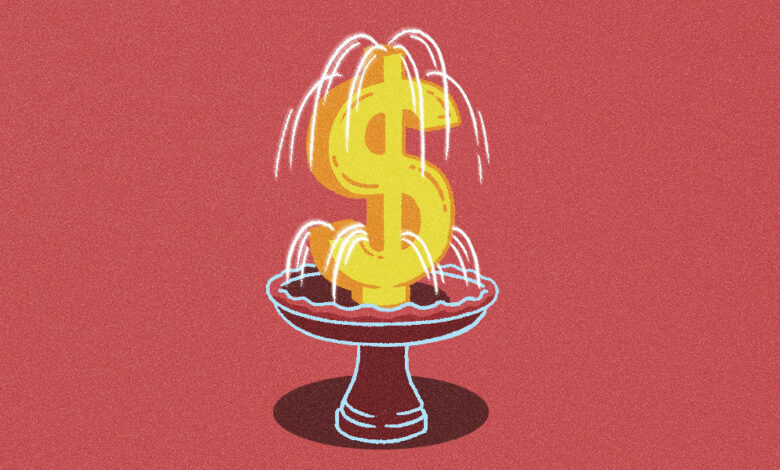Media Buying Briefing: What the holding companies’ H1 results indicate for the rest of 2024

By Michael Bürgi • August 12, 2024 •

Ivy Liu
This Media Buying Briefing covers the latest in agency news and media buying for Digiday+ members and is distributed over email every Monday at 10 a.m. ET. More from the series →
First half 2024 earnings results for the major agency holding companies are in, save for Dentsu, which announces this week, and it appears the rich keep getting richer while the rest keep trying to find their footing to grow more than 1-3%.
The rich, in this case, are Publicis Groupe, which is followed closely by Omnicom, both of which posted strong six-month performances — and more importantly, expect solid mid-single digit organic growth in the second half of 2024. Their growth is largely attributable to the media side of the business, part of which includes the blending of data and tech (with machine learning and newer forms of AI the essential ingredients of that blend).
Analysts don’t see that dynamic changing anytime soon. Trailing them are IPG and Havas who expect modest growth for the full year, while WPP remains the most challenged of the Big Six, expecting flat growth at best for the rest of 2024 and possibly even shrinkage.
Then again, in this massively uncertain world we live in, anything can happen. Political upheaval, the prospect of a recession actually taking root, fluctuation in interest rates, the risk of outright war across the Middle East, another pandemic. Any one of these circumstances, or others, could set the entire marketing and media ecosystem tumbling downward.
But for now, Publicis and Omnicom remain the front runners. Independent media analyst Brian Wieser, noted that media is getting the job done in his recent examinations of the holdcos.
For Omnicom, Wieser recently wrote: “Media agencies evidently led the way as the company’s Advertising & Media segment was up 7.8%, with media outperforming creative. As OMG is around half of this segment’s revenues, implicitly organic growth for that business was probably around 10%. This level is similar to the growth rates that business and Publicis’ media operations have posted in recent quarters, and contrasts with much weaker growth posted by competitors including WPP’s GroupM, Interpublic’s Mediabrands and Dentsu Media.”
Echoed Jay Pattisall, vp and senior agency analyst at Forrester: “Those that are demonstrating the most performance on a quarter-by-quarter basis, the strength is in their media business. And one of the tools enabling their success in their media businesses is using principle based tactics.”
Indeed, the hotly debated use of principal media — in which an agency invests in media inventory directly at a steep discount then re-sells that inventory to clients at some degree of markup (ostensibly still below market rates) — continues to deliver strong results for both front-runner holding companies. But it’s an edge that may evaporate as the other holdcos ramp up its use.
“It’s more perplexing, in fact, that you could argue that WPP and Interpublic have been less aggressive, given that Publicis and Omnicom in particular have been fairly aggressive, and it’s been fairly easy to see,” said Wieser.
The two leading holding companies also gained an edge by organizing and streamlining their data and tech assets in ways that hit closer to home for what brands need — especially in the age of cookie deprecation (Google’s recent about-face notwithstanding). Their tech stacks, in the form of Publicis’ Core ID and Omnicom’s Omni platforms, have delivered at a more successful level than their competitors, said Pattisall.
“Their approach and use of their data and technology businesses as part of the media execution … is another element to what’s driving the success in their media business,” he said.
Omnicom CEO John Wren declared as much in his comments on H1 earnings. “To serve our clients with the best, most advanced capabilities we continue to strategically align our agencies and invest in robust data and technology, scaled content and production, e-commerce and retail and performance media – all embedded in our industry-leading Omni platform,” said Wren.
IPG CEO Philippe Krakowsky was as optimistic about data and tech in his comments, citing an “industry-leading audience data and a technology stack that unifies the marketing funnel,” but acknowledging that IPG is looking at 1% organic growth overall for 2024.
Meanwhile, Havas has been hit hard in North America particularly, where something like a 6% drop in business hammered the French-owned holdco. Greg James, Havas Media Network’s North American CEO, thinks he can turn those fortunes around, but the hole dug is rather deep. A 400 million euro investment in a tech and data stack it’s calling Converged within Havas may keep parent company Vivendi in the agency game for some time, despite persistent rumors it may spin off Havas.
The outlier holding company is Stagwell, which is dwarfed in size by the Big Six, but has shown better growth than most of its larger competitors, on track to generate 5-7% organic revenue growth.
Mark Penn, Stagwell’s CEO, said he sees strong second-half potential for Stagwell, which landed a lot of new clients (mostly on the creative side of the business) in first half.
“With the pile up of [client] wins that came in starting at the end of the second quarter that are coming online for the third quarter, we increasingly are seen as an established player with a with a challenger mindset,” said Penn. “Look at how much of our performance media is weighted to the back half of the year, and then you look at the political season that’s weighted to the back half of the year. I think we have a very good chance of finishing number one by the end of the year.”
It seems Penn hopes to be the Seabiscuit of the holdco world. Whether that pans out remains to be seen.
Color by numbers
The holidays seem far away, but Experian is already noting shifts in consumer spending and behaviors going into the season. Online shopping and CTV engagement are expected to continue growing, and sales periods may get longer. Here’s more on its survey of 1,000 consumers, compared to the previous year’s holiday season. — Antoinette Siu
- Online shopping will account for about one-third of all holiday spending – especially among younger shoppers between 30-39 (38% of their holiday shopping was online).
- CTV is the top engagement channel, with more than two-thirds of the U.S. population using CTV. The average time spent is also expected to surpass 2 hours per day in 2024. Digital newspapers, like WSJ.com or CNN.com, and mobile are the next two, respectively.
- 35% of holiday shopping was done last December. December will still be the peak month for holiday buys, with the biggest sales happening during Cyber Week and the week before Christmas.
- 64% of coupon users have children, making family a big influence on purchase decisions.
Takeoff & landing
- Swedish car brand Volvo has launched a review of its global media business, putting GroupM’s Mindshare in jeopardy of losing it after 25 years of working on it. Volvo is reported to spend just under $450 million in media annually.
- Stagwell continues to build out its global reach and grow in size, with its most recent acquisition of Consulum, a pan-Middle East/North Africa government advisory consultancy. Separately, Stagwell’s Assembly MENA picked up SEO, web Analytics and UX/UI agency of record duties for Al-Futtaim Automotive.
- Other account wins: In better news for GroupM, EssenceMediacom picked up media duties for optical retailer Specsavers in Australia, adding to its existent work in New Zealand … Havas Media Network in North America landed media agency of record duties for grocery chain owner Ahold Delaize … Omnicom’s PHD won Universal Beijing Resort’s media AOR business in China … Dentsu’s Carat in Western Australia landed media duties for food brand Harvest Road Group.
Direct quotes
“Today is a sad day for the industry … Lets hope the industry doesn’t retreat back into the dark ages where every placement, no matter the risky content adjacency, is considered 99.9% brand safe. That is equivalent to ‘alternative facts.’”
— Rich Raddon, Zefr, co-founder and co-CEO
“Is this truly a boycott, or simply an ongoing decline in investment from marketers as X continues to face brand safety issues? … Marketers’ perceptions of X are that it is neither particularly trustworthy nor innovative; two hurdles it needs to overcome to win back media spend from advertisers.”
— Jane Ostler, evp of thought leadership at Kantar.Both were reacting to the news that the Global Alliance for Responsible Media is shutting down in the wake of X’s legal actions against it.
Speed reading
- Marty Swant examined the implications of the latest Adalytics report that questioned the efficacy of modern brand safety tools, with some doubt that newer tools using AI to sniff out adjacency to questionable online content isn’t working as promised.
- Antoinette Siu talked with Digitas’ chief media officer Megan Jones about how AI is helping to speed the agency’s understanding and use of social media for clients.
- Kimeko McCoy dug into the effects, if any, of Google’s partial change of heart on cookie deprecation on the burgeoning retail media network space. She followed that up with a deep dive on that same move’s effect on Uber’s $1 billion ad business.
https://digiday.com/?p=552355


